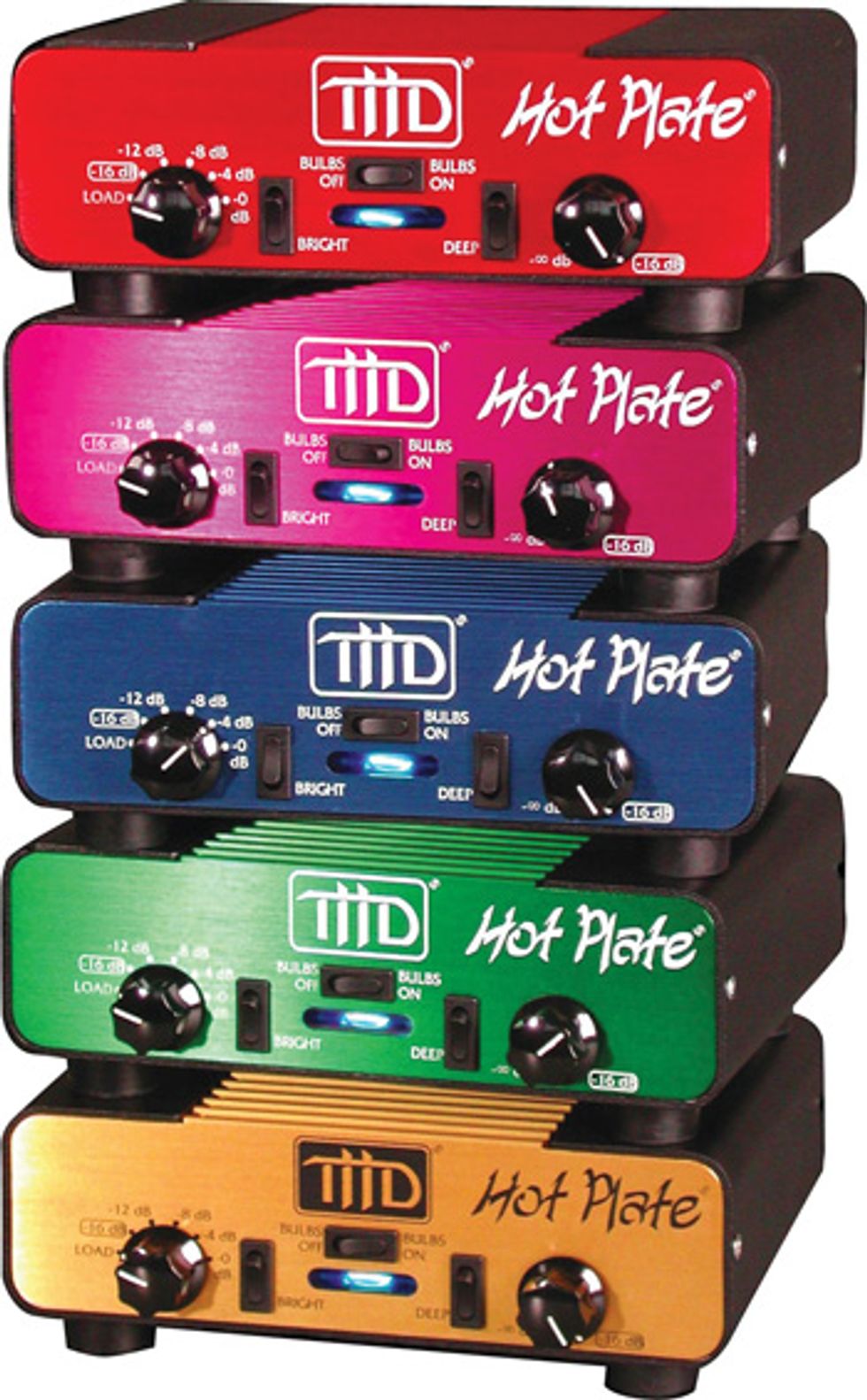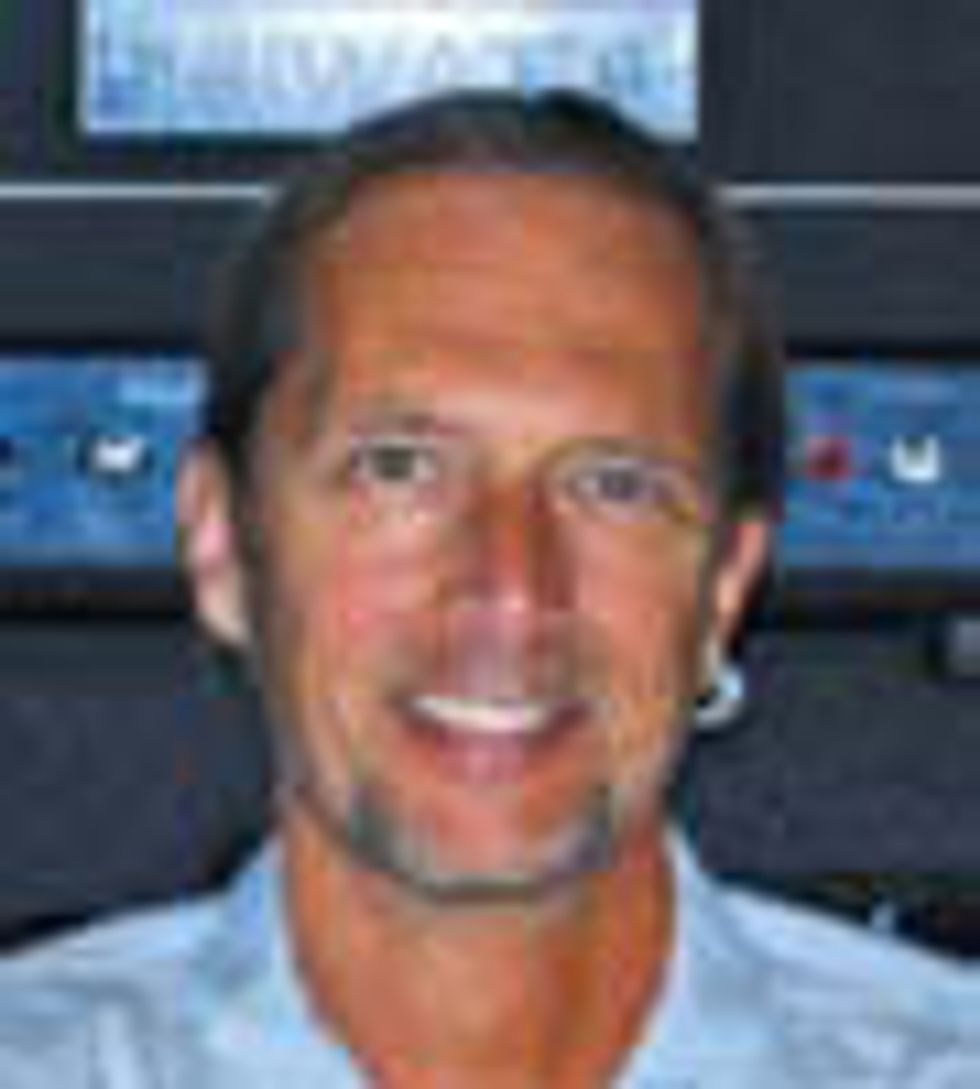
THD’s Hot Plate comes in five different models, each designed to match the specific impedance of your amplifier and speaker cabinet or, if it’s a combo, its internal speakers.
Hi Jeff,
In your August 2012 Ask Amp Man
column, Taming a Fender Hot Rod
DeVille, you offered several suggestions
for reducing amp volume. One was to
use a power attenuator, such as a “THD
Hot Plate, Tube Amp Doctor Silencer,
Rivera RockCrusher, Tone King Ironman,
Dr. Z Air Brake, and Alessandro Muzzle.
Inserted between the output of the amp
and the speaker, these devices allow you to
adjust your amp to the settings that sound
and feel the best, and then attenuate the
amount of power being sent to the speaker.”
I’ve been considering using a THD Hot Plate to do this very thing with my DeVille. My plan is to crank the amp a little bit loud (probably at about 2 or 3) through a Fender Band-Master VM 212 8 Ω enclosure. The goal would be to pump the low end out into the room. Currently only the highs are getting out front because we don’t mic the amps in my band. Then I plan to place the Hot Plate between the DeVille and its internal speakers, and turn down the volume a bit going to these speakers. With the combo sitting on top of the enclosure, I’d listen to the DeVille without getting blasted—essentially it would be my monitor, set to a volume output that’s comfortable to sing with.
Will this configuration work for my
purposes? Will the Hot Plate cause resistance
or electronic problems with the amp?
Thanks,
Richard Peninger
Hi Richard,
This is an interesting question. The configuration
you suggest seems unique, at
least to me. I’m not quite sure how the end
result will turn out in terms of acoustics,
but I can certainly help you get the set up
working electrically.
The first thing you’ll need to acquire is an attenuator. If the attenuator is impedance dependant, choose one that matches the impedance of your combo’s speaker configuration. If your DeVille is the 4x10 model, the combo speaker load is 8 Ω. If you have a 2x12 DeVille, the internal load is 4 Ω, so choose your attenuator accordingly.
Next you’ll need a splitter box or splitter cable. This will split the DeVille’s speaker output signal to the different speaker loads. A simple aluminum, metal, or even plastic box with three 1/4" jacks (one acts as the input and the other two are wired in parallel as outputs) would be the easiest solution here. If you choose to use a cable assembly to split the speaker signal, steer clear of a “headphone” splitter, as the gauge of wire used in these will probably not be sufficient to carry the output power of the amplifier. A failure here can cause catastrophic results, so use the right equipment for the job.
Another piece of the puzzle will be either a speaker extension cable to increase the length of the speaker wire connected between the DeVille and its speakers, or a replacement cable that’s long enough to let you connect the combo speakers to the attenuator device, should you choose to place the attenuator somewhere other than inside the combo. I’d recommend the second option—replacing the existing combo speaker cable—as the molded plastic plugs on these cables tend to become problematic over time.
One final item to acquire is simply a 1/4" plug—no wires, nothing connected to it. This is needed to “trick” the amplifier. More on that in a moment.
Now let’s get everything connected. First, unplug the internal speaker cable from the amp’s speaker output. Next, connect the input of the splitter box or cable to the extension speaker output of your DeVille. Now connect your Band-Master extension speaker cabinet to one of the outputs of the splitter.
Then connect the splitter’s other output to the input of your attenuator and connect the output of the attenuator to your DeVille’s internal speakers. Please be sure to use proper speaker cable for all these connections and not instrument cable. The latter is designed to carry low-level voltage, not high power.
Lastly, insert the sole 1/4" plug into the DeVille’s main speaker output. This is a critical step, as without it, the amplifier will be outputting into a direct short, which again can cause major issues.
This plug accomplishes two things: It removes the direct short on the output of the amplifier, and that in turn allows signal to flow to the extension speaker output, which is a “switching” type of jack. By plugging the input of the splitter box into the extension speaker output, the extension speaker jack switches output transformer taps. In the case of the 4x10 combo, it switches from the 8 Ω tap to the 4 Ω tap. For the 2x12 combo, it switches from the 4 Ω to the 2 Ω tap. This impedance switching is necessary to properly match the output impedance of the amp to that additional speaker load.
There you have it. As I mentioned, I’m not sure if this will acoustically satisfy your needs, but now you’ll at least be able to properly experiment with the configuration. I hope this will allow your DeVille to delight!
Warning: All tube amplifiers contain lethal voltages. The most dangerous voltages are stored in electrolytic capacitors, even after the amp has been unplugged from the wall. Before you touch anything inside the amp chassis, it’s imperative that these capacitors are discharged. If you are unsure of this procedure, consult your local amp tech.
 Jeff Bober is one of
the godfathers of the
low-wattage amp revolution,
co-founded and was
the principal designer for
Budda Amplification. Jeff launched EAST
Amplification in 2010, and he can be reached at
pgampman@gmail.com.
Jeff Bober is one of
the godfathers of the
low-wattage amp revolution,
co-founded and was
the principal designer for
Budda Amplification. Jeff launched EAST
Amplification in 2010, and he can be reached at
pgampman@gmail.com.












![Rig Rundown: Russian Circles’ Mike Sullivan [2025]](https://www.premierguitar.com/media-library/youtube.jpg?id=62303631&width=1245&height=700&quality=70&coordinates=0%2C0%2C0%2C0)




